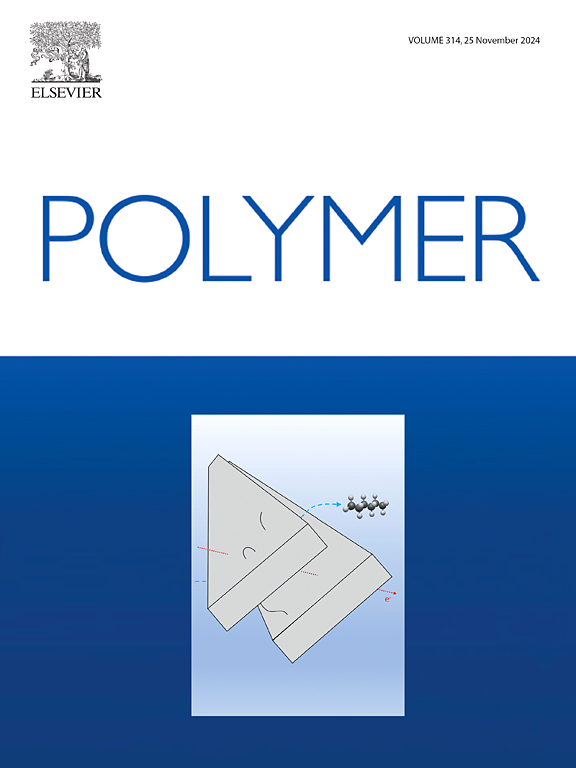Responsive properties and triggered disassembly of supramolecular microgels: a key role of the structure.
IF 4.1
2区 化学
Q2 POLYMER SCIENCE
引用次数: 0
Abstract
Although understanding structure–property relationships in microgels is crucial, it remains limited due to the challenges associated with both controlling and quantitatively characterizing the distribution of crosslinkers within the network. Here, multi-responsive supramolecular poly(N-isopropylacrylamide) (PNIPAM) microgels have been synthesized with either “ultra” core-shell (via batch synthesis) or quasi homogeneous (via continuous feeding) distributions of a metallosupramolecular charged crosslinker (SC), while maintaining a constant size. The SC presents two main advantages. First, its color and its high electronic contrast allow an easy and precise quantification of both its final content and its spatial distribution in the microgel network respectively. It is found that microgels with a quasi-homogeneous SC distribution exhibit a lower swelling ratios upon decreasing the temperature and/or the salt concentration. Second, the triggered SC cleavage through chemical oxidation allows the microgel disassembly. Both the SC cleavage kinetics and the resulting microgel disassembly are faster when the initial SC distribution is quasi-homogeneous. Furthermore, the molar mass of the disassembled polymer chains can be closely correlated to the initial microgel structure. Overall, this work highlights that the microgel structure is a key parameter in understanding their behavior and optimizing their applications.

超分子微凝胶的响应特性和触发分解:结构的关键作用。
虽然了解微凝胶中的结构-性质关系至关重要,但由于控制和定量表征网络中交联剂分布的挑战,它仍然有限。本研究在保持恒定尺寸的情况下,通过“超”核-壳(通过间歇合成)或准均匀(通过连续加料)分布的金属超分子带电交联剂(SC)合成了多响应的超分子聚n -异丙基丙烯酰胺(PNIPAM)微凝胶。SC有两个主要优势。首先,它的颜色和它的高电子对比度使得它的最终含量和它在微凝胶网络中的空间分布分别容易和精确的量化。研究发现,准均匀SC分布的微凝胶随着温度和盐浓度的降低,溶胀率降低。其次,通过化学氧化触发的SC裂解允许微凝胶分解。当初始SC分布准均匀时,SC裂解动力学和由此产生的微凝胶分解都更快。此外,聚合物链的摩尔质量可以与初始微凝胶结构密切相关。总的来说,这项工作强调了微凝胶结构是理解其行为和优化其应用的关键参数。
本文章由计算机程序翻译,如有差异,请以英文原文为准。
求助全文
约1分钟内获得全文
求助全文
来源期刊

Polymer
化学-高分子科学
CiteScore
7.90
自引率
8.70%
发文量
959
审稿时长
32 days
期刊介绍:
Polymer is an interdisciplinary journal dedicated to publishing innovative and significant advances in Polymer Physics, Chemistry and Technology. We welcome submissions on polymer hybrids, nanocomposites, characterisation and self-assembly. Polymer also publishes work on the technological application of polymers in energy and optoelectronics.
The main scope is covered but not limited to the following core areas:
Polymer Materials
Nanocomposites and hybrid nanomaterials
Polymer blends, films, fibres, networks and porous materials
Physical Characterization
Characterisation, modelling and simulation* of molecular and materials properties in bulk, solution, and thin films
Polymer Engineering
Advanced multiscale processing methods
Polymer Synthesis, Modification and Self-assembly
Including designer polymer architectures, mechanisms and kinetics, and supramolecular polymerization
Technological Applications
Polymers for energy generation and storage
Polymer membranes for separation technology
Polymers for opto- and microelectronics.
 求助内容:
求助内容: 应助结果提醒方式:
应助结果提醒方式:


